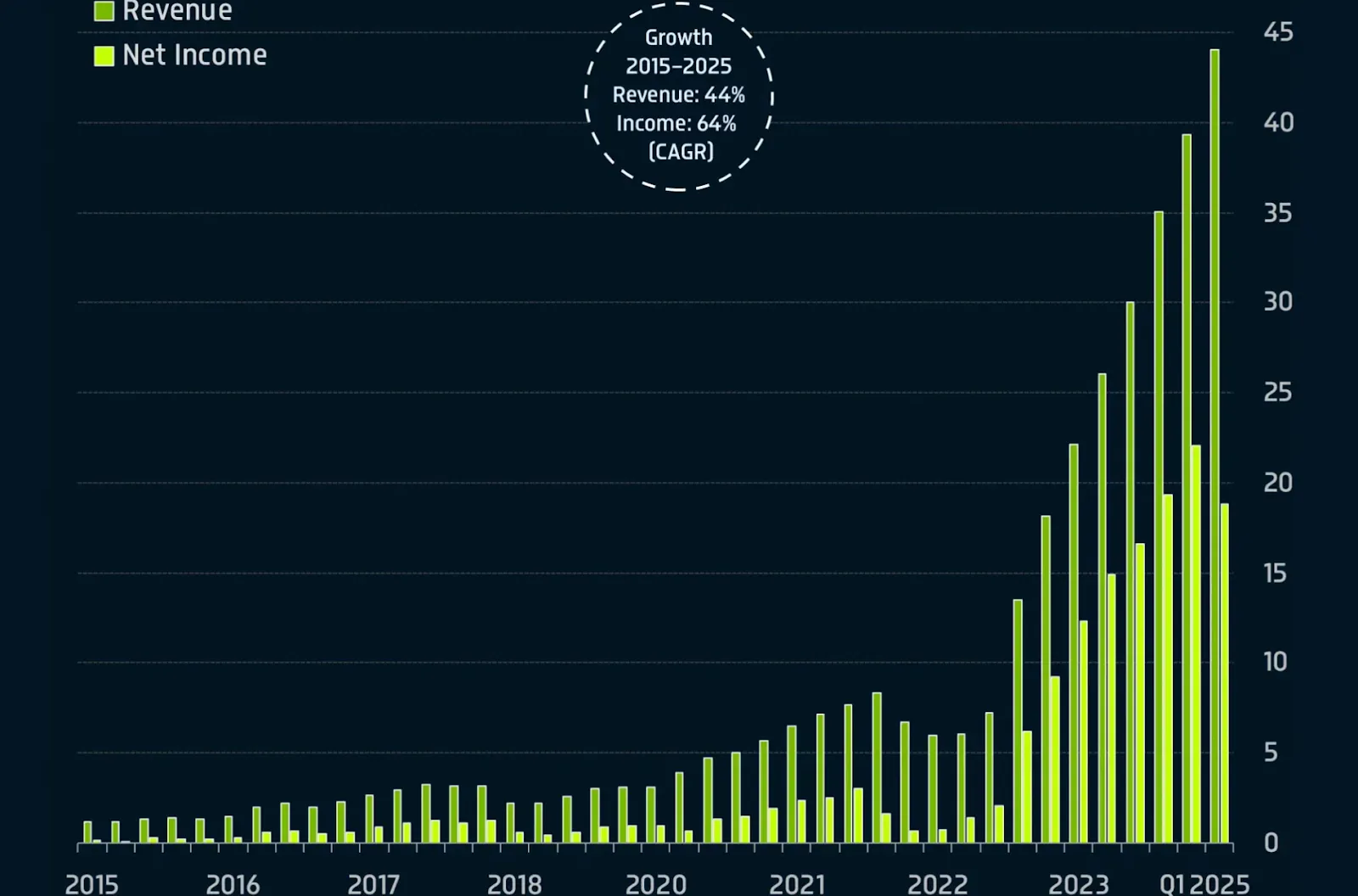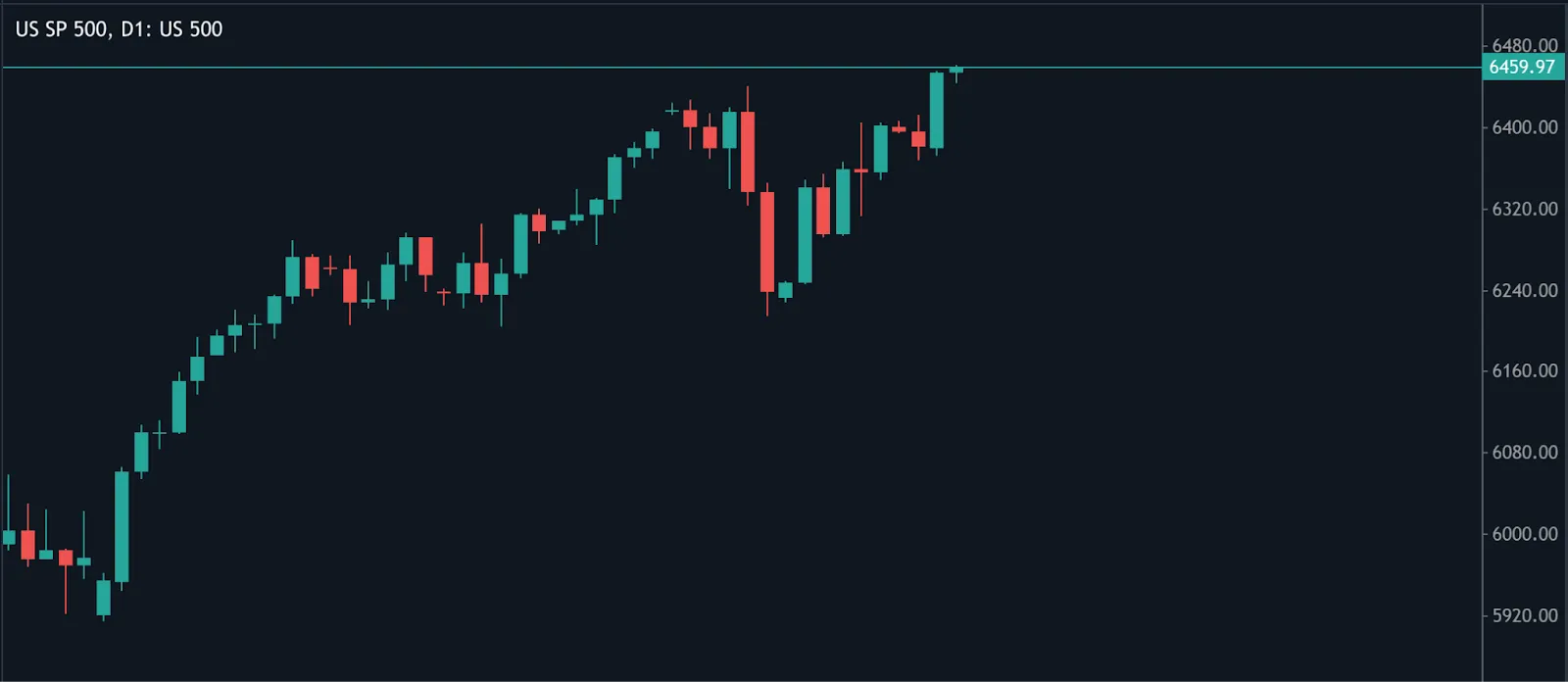Why Nvidia's market value surpassed the UK stock market

According to LSEG data, Nvidia’s market value has surged past $4 trillion, overtaking the combined worth of every publicly listed company in the United Kingdom. The AI chipmaker’s dominance in high-performance computing, combined with record demand for artificial intelligence infrastructure, has made it the most valuable publicly traded company in history and the single largest driver of S&P 500 performance. At 7.3% of the index, Nvidia now has more influence over US equity benchmarks than any other stock in decades.
Key takeaways
- Nvidia’s $4 trillion market cap is larger than the total value of the UK’s stock market.
- The company controls 92% of the discrete GPU market and supplies AI infrastructure to Microsoft, Amazon, and Google.
- Nvidia’s rally has been a key contributor to the S&P 500 breaking above 6,400 for the first time.
Nvidia’s GPU market share and AI leadership drive valuation
Nvidia’s record valuation is built on its control of the high-performance GPU market - hardware critical for training and deploying large-scale AI systems. In 2025, industry data from Statista showed the company commanding 92% of the discrete GPU market, with its chips powering AI data centres worldwide.

Its Q1 2025 revenue reached $44.1 billion, up 69% from a year earlier, and its Q2 guidance is set at $45 billion ± 2%.

These figures underscore the scale of the AI boom, where companies are shifting billions in spending toward computational power. Nvidia’s CUDA software platform has become the industry standard for AI development, effectively locking in developers and enterprises to its ecosystem.
The scale of this dominance means that Nvidia alone is now worth more than the UK’s entire public market, which includes major global names such as Shell, HSBC, AstraZeneca, and BP. This valuation gap highlights the extent to which investors are betting on AI as the next major economic growth driver.
Nvidia’s AI dominance is driving the S&P 500 to record highs
The broader market impact of Nvidia’s rally has been historic. On 12 August 2025, the S&P 500 closed above 6,400 for the first time ever, capping a four-month surge that added $13.5 trillion in market value.

Analysts point to a combination of moderating headline inflation and aggressive rotation into technology stocks as the catalysts, with Nvidia at the centre of both trends.
Its outsized index weighting means Nvidia’s share price moves can account for a significant portion of the S&P 500’s daily changes. For example, an 8.2% gain in Nvidia’s stock once made up 44% of the index’s entire daily rise. In the latest rally, Nvidia’s valuation milestone coincided with the index’s breakout, underscoring how much this single stock now drives overall market sentiment.
Policy and geopolitics
Nvidia’s rise has not been without challenges. In April 2025, the Trump administration blocked the export of high-end AI chips to China, including Nvidia’s H20, costing the company billions in potential revenue. However, BBC reports Nvidia and AMD negotiated a deal to resume sales in exchange for paying the US government 15% of their revenues from China chip sales.
This agreement reopens the second-largest GPU market in the world to Nvidia. Analyst estimates suggest H20 and AMD MI380 sales to China could generate $35 billion annually, with around $5 billion going to the US Treasury. While this trims profit margins, regaining China market access supports Nvidia’s revenue base and reduces the risk of Chinese tech firms replacing US technology with domestic alternatives.
CEO Jensen Huang has argued that allowing China to buy US chips is better for US national security than forcing it to develop its own competing hardware. The White House appears to agree, preferring controlled sales over pushing demand into black market channels.
Market impact and concentration risk
Nvidia’s influence over the S&P 500 is unprecedented in modern markets. Historical data shows that even at the height of the dot-com bubble, no company ever exceeded 6% of the index’s weighting. At 7.3%, Nvidia can move the market on its own - and in 2025, it has been the single largest contributor to the S&P 500’s record-breaking rally.
The top 10 companies in the S&P 500 now make up 38% of the index’s total value, a level of concentration that raises both opportunity and risk.

For bullish investors, Nvidia’s dominance signals leadership in a high-growth sector. For cautious market participants, it highlights vulnerability: any slowdown in AI spending or geopolitical disruption could drag down the broader market.
Nvidia stock technical analysis
At the time of writing, Nvidia’s stock price is holding at around $183.15 with neither bulls nor bears making a decisive move - hinting at potential consolidation. Volume bars showing strong seller pushback also add to the potential consolidation narrative. Prices could struggle to breach current levels and bounce off the $183.25 resistance level. If we see a dip, prices could find support floors at $171.15, $161.80, and $141.45.

Frequently asked questions
Why is Nvidia worth more than the UK stock market?
Because its AI hardware dominance, explosive revenue growth, and entrenched software ecosystem have created a valuation larger than an entire developed market.
What role does China play in Nvidia’s valuation?
China accounted for 13% of Nvidia’s sales in 2024. Regaining access through the export deal could restore billions in lost revenue despite the 15% revenue share paid to the US government.
What risks does Nvidia face?
Geopolitical tensions, competition from AMD and Huawei, possible limits on data centre expansion due to power constraints, and the risk of AI spending slowing after a period of rapid buildout.
How sustainable is Nvidia’s lead?
Its CUDA lock-in, integration of GPUs with networking hardware, and unmatched manufacturing partnerships provide a strong moat, but its high valuation leaves little margin for error.
Investment implications
Many say Nvidia’s valuation eclipsing the UK stock market coincides with the S&P 500’s historic break above 6,400, cementing the company’s role as the market’s most influential stock. With market share dominance, strategic alignment with US policy, and renewed access to China, Nvidia could maintain its lead.
However, its unprecedented size and influence over major indices mean that Nvidia’s fortunes are now deeply intertwined with broader market performance. For investors, this makes Nvidia both the most important AI growth story and one of the biggest concentration risks in modern market history.
Disclaimer:
The performance figures quoted are not a guarantee of future performance.



